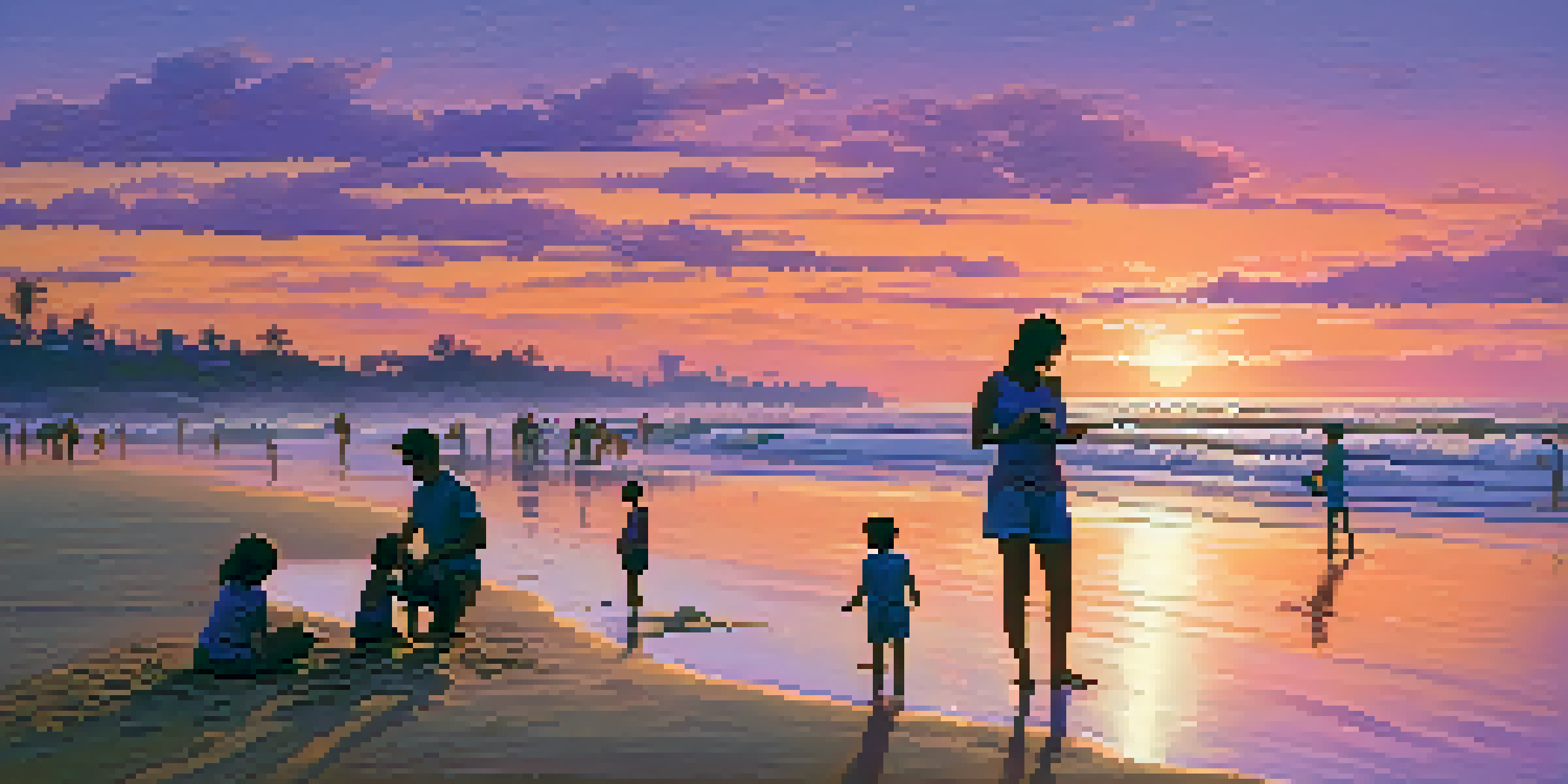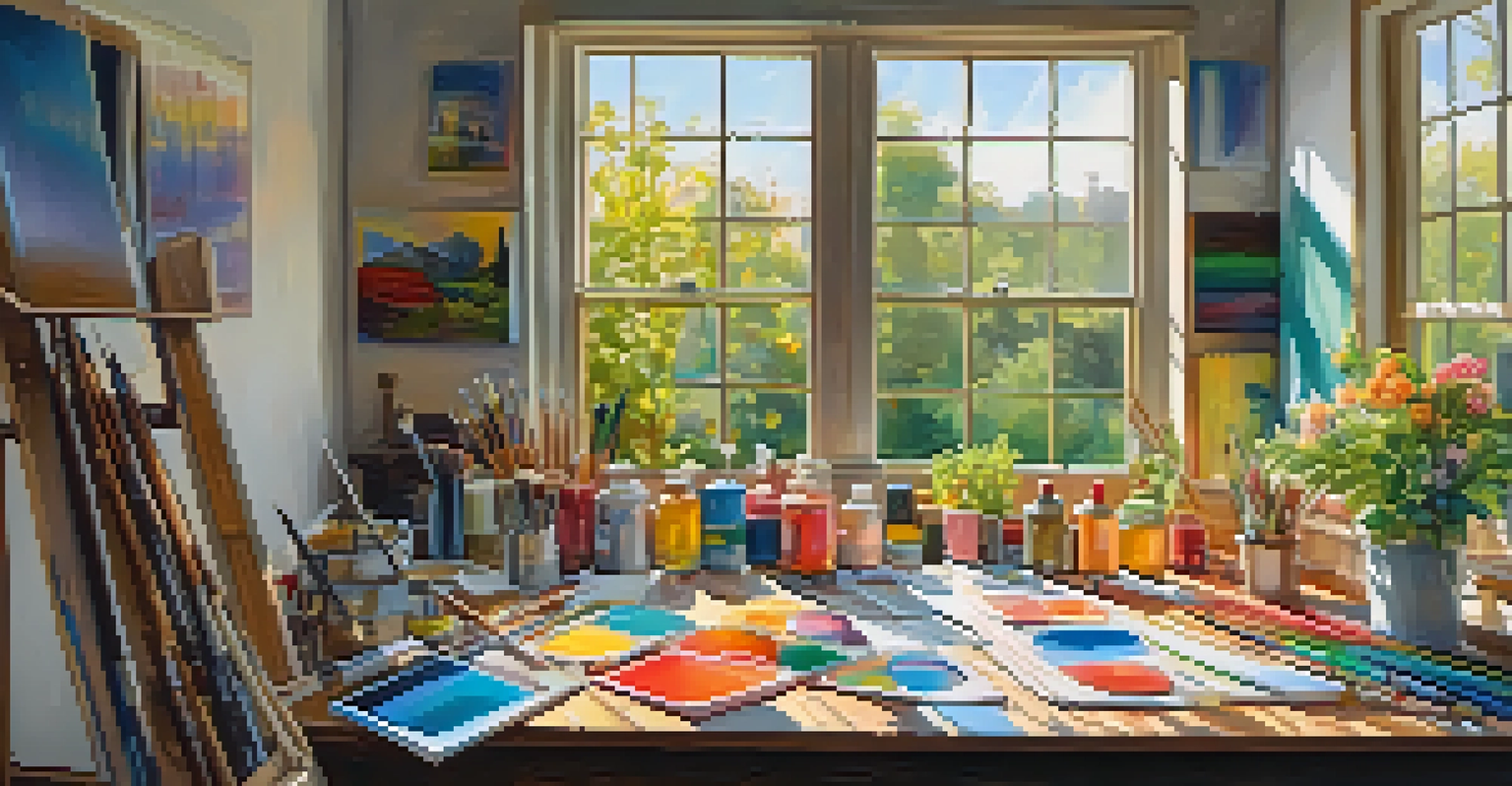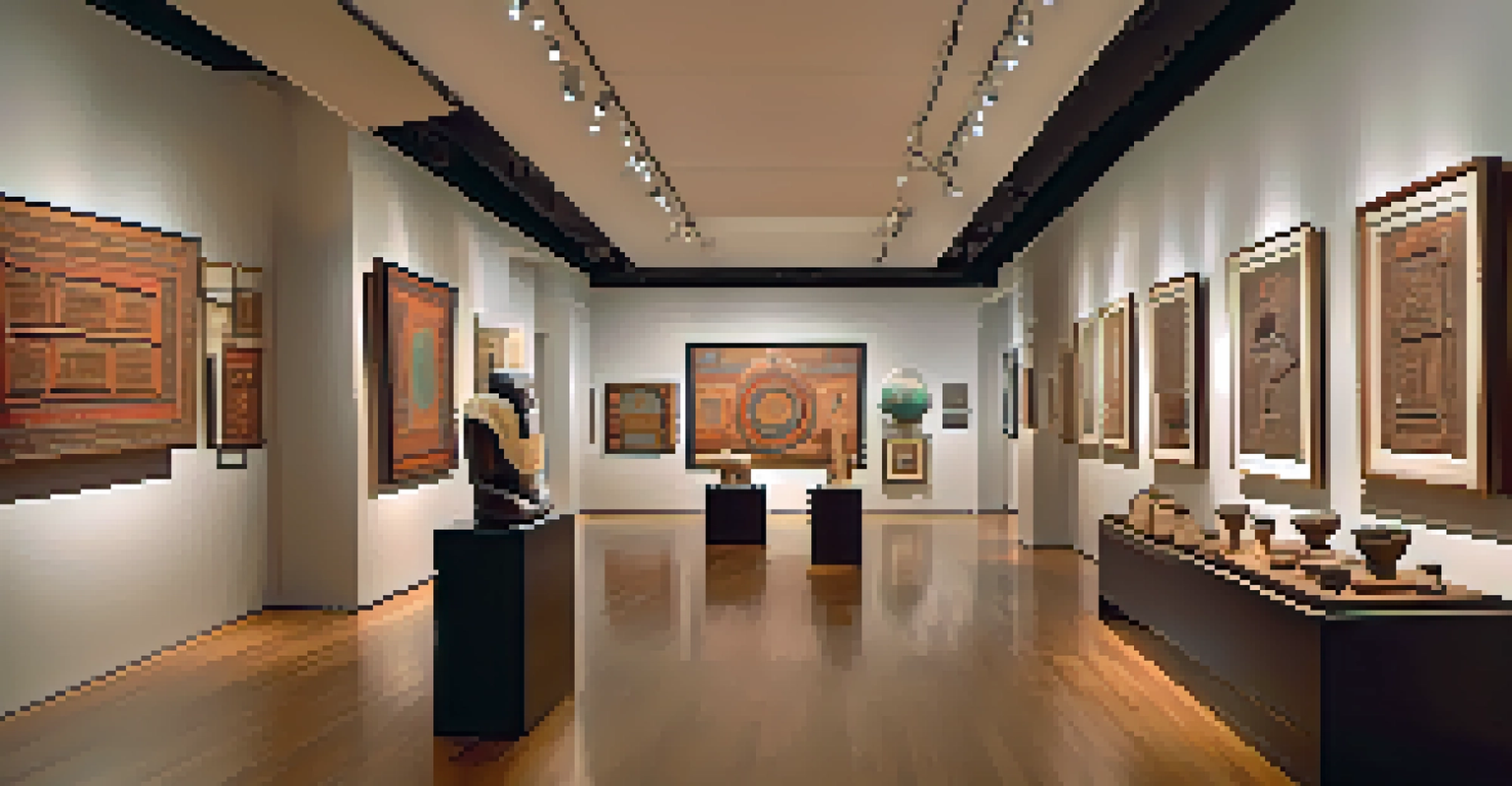Art and Memory: The Emotional Resonance of Visual Reminders

The Intricate Link Between Art and Memory
Art and memory share a profound connection, often intertwining in ways we don't consciously recognize. When we look at a piece of art, it can evoke vivid recollections of personal experiences, much like a scent that transports us back to a moment in time. This link is so powerful that it can shape how we remember events, sometimes even altering our perceptions of the past.
Art is the most beautiful of all lies.
For instance, a painting of a sunlit beach might remind you of family vacations during childhood, triggering feelings of joy and nostalgia. These emotional responses are not just fleeting; they can deepen our understanding of both the artwork and our own lived experiences. In this way, art serves as a visual reminder, a catalyst for emotional reflection.
Related Resource
Moreover, the memories evoked by art can lead to a sense of connection with the artist, who may have captured a universal feeling or experience. This shared emotional resonance creates a dialogue between the viewer and the artwork, enriching both the artistic experience and personal memory.
The Science Behind Visual Reminders
Neuroscience shows us that our brains process visual stimuli in complex ways, linking images to emotions and memories. When we encounter a piece of art, various areas of our brain work together to decode the visuals, often triggering memories associated with similar themes or colors. This process is akin to how a song can remind us of a specific moment in our lives, anchoring our emotions to a particular time and place.

Certain colors and forms can evoke specific feelings; for example, warm hues might bring about feelings of comfort, while cooler tones could elicit sadness or calmness. This emotional palette allows artists to communicate their messages powerfully, often making their work resonate deeply with viewers. As we engage with art, our memories become intertwined with the emotions it stirs within us.
Art Evokes Personal Memories
Art serves as a powerful visual reminder that can evoke vivid personal memories and emotions, enriching our understanding of both the artwork and our own experiences.
Understanding this science can enhance our appreciation for art, making us more aware of how our personal experiences shape our interpretations. This awareness can encourage us to explore our emotional landscapes through the lens of art, leading to meaningful insights about ourselves.
Art as a Tool for Healing and Remembrance
Art has long been recognized as a powerful tool for healing, particularly in therapeutic settings. For individuals coping with trauma or loss, creating or engaging with art can provide an outlet for expression, helping to process complex emotions. This therapeutic aspect of art underscores its role as not just a visual experience, but as a means of emotional release and remembrance.
Memory is the treasure house of the mind wherein the monuments thereof are kept and preserved.
For example, many people find solace in creating memorial art for loved ones who have passed away. This process can help them navigate their grief, allowing memories to surface and be honored in a tangible way. The act of creating or viewing such pieces can facilitate a conversation about loss, fostering connection and understanding.
Related Resource
Art therapy, which utilizes creative processes to improve mental health, exemplifies the healing power of visual reminders. By encouraging individuals to express themselves artistically, practitioners help them reconnect with their memories and emotions, ultimately promoting healing and resilience.
Cultural Artifacts and Collective Memory
Cultural artifacts, such as traditional paintings or sculptures, serve as visual reminders of a community's shared history and identity. These works of art often encapsulate stories, beliefs, and experiences that shape a culture, fostering a sense of belonging among members of that community. When we engage with these artifacts, we tap into a collective memory that connects us to our ancestors and cultural roots.
For instance, Indigenous art often carries deep spiritual significance, reflecting the values and traditions of a people. Viewing such art can evoke a sense of pride and connection, while also educating others about the richness of that culture's history. This shared emotional journey helps to preserve collective memory across generations.
Art as Healing and Remembrance
Engaging with art can provide a therapeutic outlet for processing complex emotions, especially in times of trauma or loss, fostering healing and connection.
The role of cultural artifacts in shaping our understanding of history cannot be overstated. They remind us of who we are, where we come from, and how our past continues to influence the present and future. By appreciating these visual reminders, we contribute to the ongoing narrative of our shared human experience.
Personal Art Collections and Memory Curation
Many individuals curate their own art collections, consciously selecting pieces that resonate with their personal experiences and memories. This act of curation is a way of shaping one's environment and creating a space that reflects individual identity. Each artwork becomes a visual reminder of a cherished moment or a significant life event, enriching the atmosphere of the home.
For example, a family might display artworks that represent milestones, such as weddings or the birth of a child. These pieces not only beautify their space but also serve as constant reminders of love, joy, and shared experiences. Over time, these visual reminders can evoke a powerful sense of nostalgia and connection to one's family history.
Related Resource
In this way, personal art collections become a form of storytelling. They allow individuals to express their values, passions, and memories through the art they choose to surround themselves with. This curated experience ultimately enhances emotional well-being and creates a meaningful living environment.
Art's Role in Social Movements and Memory
Throughout history, art has played a crucial role in social movements, serving as both a form of protest and a means of remembrance. Artists have used their work to raise awareness about social issues, making powerful statements that resonate emotionally with viewers. This intersection of art and activism highlights how visual reminders can inspire collective memory and motivate change.
For instance, murals and street art often capture the essence of social movements, reflecting the struggles and triumphs of marginalized communities. These visual reminders not only commemorate significant moments in history but also galvanize support for ongoing causes. Engaging with such art can evoke strong emotions, prompting viewers to reflect on their values and beliefs.
Cultural Artifacts Shape Identity
Cultural artifacts encapsulate shared histories and values, creating a sense of belonging and connecting individuals to their ancestral roots and collective memory.
Additionally, the art created during these movements can serve as historical documentation, preserving memories for future generations. By understanding the emotional context behind these works, we can appreciate the power of art as a vehicle for social change and a reminder of the ongoing fight for justice.
The Future of Art and Memory in a Digital Age
As we navigate the digital age, the relationship between art and memory continues to evolve. Online platforms enable artists to share their work with a global audience, creating new opportunities for connection and resonance. However, the sheer volume of visual content can also make it challenging to form deep emotional connections with individual pieces.
Despite these challenges, digital art and technology offer innovative ways to engage with memories. Virtual reality, for example, can create immersive experiences that transport viewers into the artist's world, allowing for a profound emotional connection. This technology can serve as a form of visual reminder, enhancing our understanding of the artist's intent and the emotions behind their work.

Looking ahead, it's essential to consider how digital art will shape our memories and emotional landscapes. As we continue to explore new mediums, we must also remain attuned to the timeless power of traditional art forms, ensuring that our connections to memory and emotion endure in both physical and digital realms.